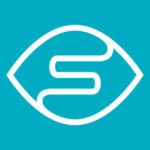Living with vision loss can be difficult. We understand you have questions and worries, so here are resources to help you with your vision loss. You don’t have to go through it alone. If you have any questions, please contact VRS directly:
Recent articles on Vision Loss, Vision Rehabilitation, Accessibility, Conditions that affect your vision, helpful resources AND Inspiring Stories.
We offer speakers and in-service training on eye health, vision loss, vision rehabilitation, and the abilities & needs of people with vision loss.
Access technology training allows those with vision loss to be productive and efficient by using the most current technologies.
A cataract is a clouding of the eye’s lens, which blocks or changes the passage of light into the eye. Learn more information that will help you be more educated and involved in your eye doctor’s treatment through diagnosis, surgery and recovery.
Diabetic retinopathy is a serious sight-threatening complication of diabetes. It causes progressive damage to the blood vessels in the tissue at the back of the eye (retina). If left untreated, diabetic retinopathy can cause blindness.
Glaucoma is a condition that damages your eye’s optic nerve. It gets worse over time. Most people have no early symptoms. Visit your eye doctor regularly so they can diagnose and treat glaucoma before you have long-term vision loss. Learn more more about treatments and prevention.
Macular Degeneration is the leading cause of vision loss, affecting more than 10 million Americans – more than cataracts and glaucoma combined. Get healthy living tips and the latest information from researchers working to prevent, treat and cure macular disease.
Uncontrolled diabetes can have a negative impact on your vision and cause damage to your eyes. Diabetes doesn’t affect only those individuals overweight or those who eat a lot of junk food or sugary drinks and meals. Diabetes can impact any race, any age, any income level…any person!
Georgia Radio Reading Service (GaRRS) is Georgia’s premier provider of information for individuals who are visually-impaired or otherwise print-impaired. Every month, they broadcast and stream hundreds of programs including local and national newspapers, books, magazines, events, and employment opportunities.
National Library Service has free braille and audio books for people with blindness, temporary or permanent low vision, or a physical disability that prevents them from reading or holding the printed page. Through a national network of cooperating libraries, Items are delivered by postage-free mail or instantly downloadable.

Android & iPhone
Tap Tap See is designed to help the blind and visually impaired identify objects they encounter in their daily lives. Tap to take a photo, then listen to description.

Android & iPhone
Cam Scanner takes pictures of documents and reads aloud-or you can send it to your computer. Will scan receipts, recipes, documents, and more.
Android & iPhone
Overdrive gives you access to eBooks, audiobooks, tv shows and movies from your local library. Change font size, margin, contrast and more to suit your style. App features includ your bookshelf, library websites, and bookmarks.

iPhone
Text to speech camera and facial recognition. Seeing AI narrates the world around you. Designed for the blind and low vision community, this app harnesses the power of AI to open up the visual world and describe nearby people, text and objects.

iPhone
Look Tel aids persons with low vision or blindness with real-time recognition technology that enables users to scan and instantly recognize objects such as packaged goods, soda cans, money, CDs, and landmarks like signs and store fronts.
Addiction Treatment for Individuals Blind or Deaf – If you, or someone close to you, is struggling with addiction (and has deafness, hearing loss, blindness, or impaired vision), they can help you examine your options, from conventional, privately ran programs, to those that are tailored to fit the exact needs of your disability.
5 Innovative Ways Art is becoming More Accessible to the Blind Community – Galleries and Museums aren’t always accessible to everyone, often excluding blind people and those with low vision from truly experiencing the art world. Luckily advocates have developed new solutions, creating tactile ways for art lovers to substitute sight for touch.